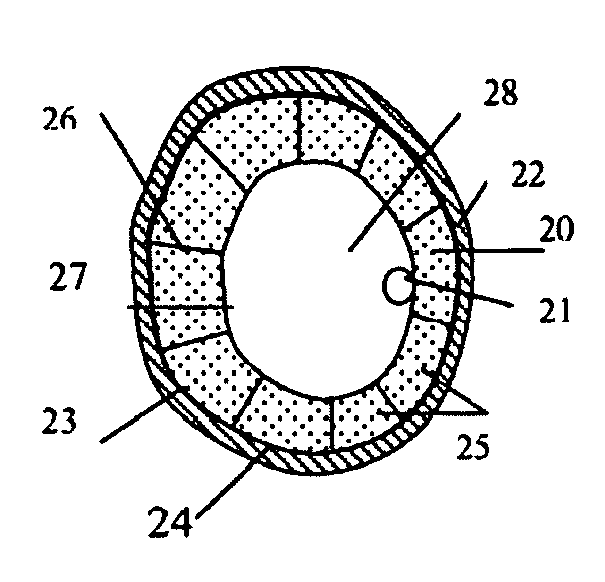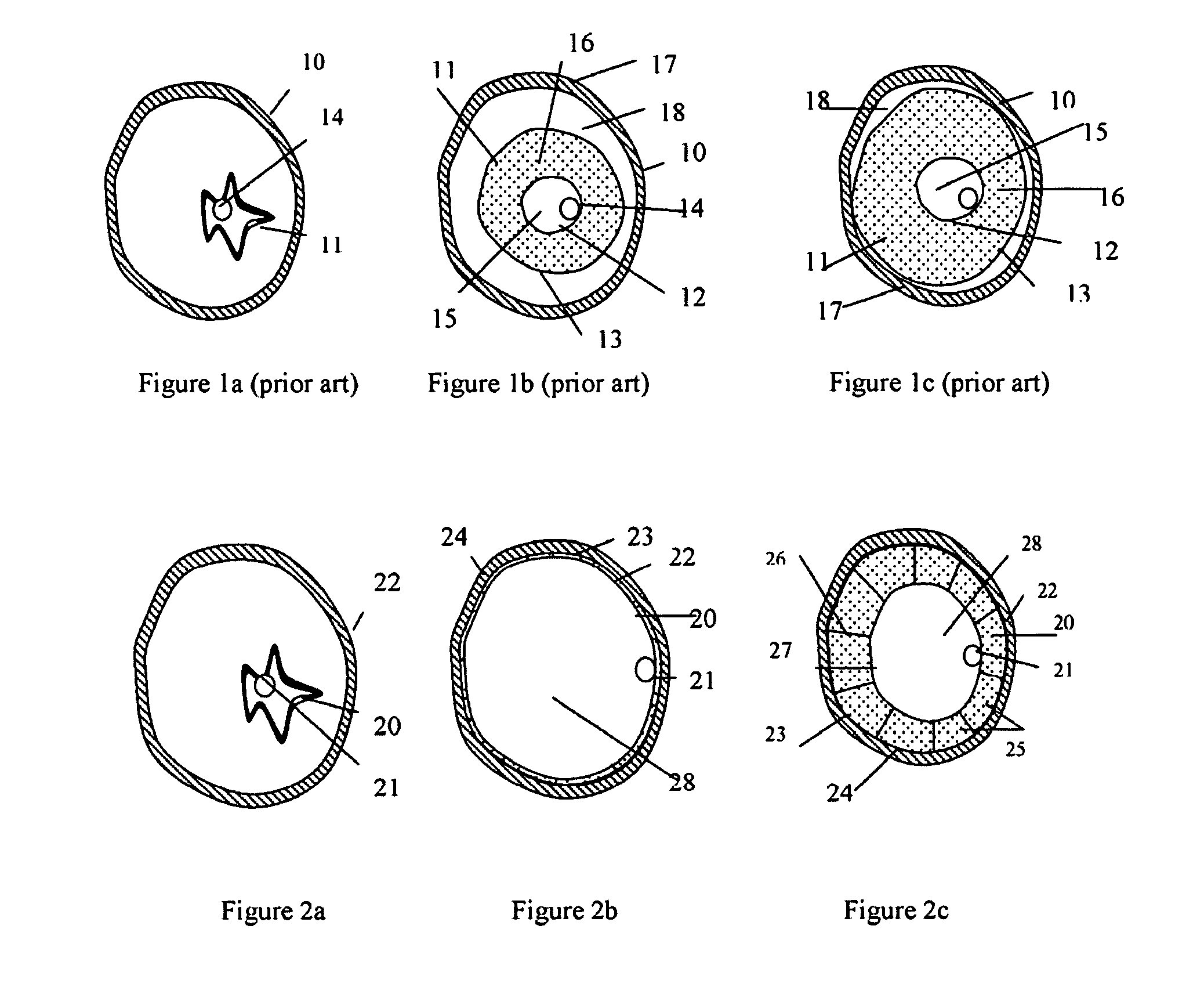These weakened sections of vessel walls can rupture, causing an estimated 32,000 deaths in the United States each year.
Additionally, deaths resulting from aneurysmal rupture are suspected of being underreported because sudden unexplained deaths are often misdiagnosed as heart attacks or strokes while many of them may in fact be due to ruptured aneurysms.
However, this procedure was risky and not suitable for all patients.
Patients who were not candidates for this procedure remained untreated and thus at risk for aneurysm rupture or death.
While tubular
stent grafts represent improvements over more
invasive surgery procedures, there are still risks associated with their use to treat aneurysms.
Stent graft migration and endoleak are the biggest challenges for tubular
stent grafts because of the hemodynamic forces within the
stent graft lumen, limited fixation near the neck, and the lack of lateral support for the stent graft at the aneurysm site.
Stent graft migration can break the seal between the tubular stent graft and vessel and lead to Type I endoleak, or the leaking of blood into the aneurismal sac between the outer surface of the stent graft and the inner surface of the
blood vessel.
This endoleak can result in the aneurysm wall being exposed to hemodynamic pressure again, thus increasing the risk of rupture.
The patent collateral arteries (inferior mesenteric
artery,
lumbar artery) in the aneurismal sac can lead to an increased pressure in the aneurysm and may cause aneurysm enlargement and rupture in some patients.
Both follow-up procedures and secondary interventions are undesirable because the cost and the risk involved in those procedures.
While these physical anchoring devices have proven to be effective in some patients, stent grafts failure and migration are still reported in many patients.
However, the amount of tissue growth required to secure the stent graft on the vessel wall is uncertain at this moment.
However,
embolization agent or dislodged emboli can travel downstream and embolize small vessels in the legs or colon.
Unfortunately, it is very difficult to identify the patency of the
collateral vessels (inferior mesenteric
artery,
lumbar artery) in the aneurismal sac by the current imaging techniques, such as CT or MRI.
If those
collateral vessels are patent, i.e. a Type II endoleak is diagnosed, there is a risk that the injected
embolization agent or dislodged emboli will migrate into those collateral vessels and embolize important vessels in the
lumbar and colon.
However, there are several concerns with this approach.
However, the gap between the fill structure and the aneurysm wall cannot be visualized easily (no contrast agent in gap or aneurysm wall) under
Fluoroscope during the inflation of the fill structure, physician cannot determine if the gap has been filled (or not being filled) by the fill structure.
This uncertainty can cause excess amount of filler in the fill structure and consequently
high stress on the aneurysm wall and place the patient in great risk.
Existing blood in the aneurysm (with the added filler) can also cause
high stress on the aneurysm wall during the inflation of fill structure if the collateral arteries in the aneurysm are occluded.
Second, a significant amount of filler is required to fill the aneurismal sac for patients with large aneurysms.
Third, the aneurysm tends to remodel and possibly to shrink after the placement of filler and / or stent graft as a result of the reduced hemodynamic pressure in the aneurysm.
This may cause
occlusion or a higher hemodynamic pressure on the fill structure and lead to migration from its designated position.
 Login to View More
Login to View More  Login to View More
Login to View More 


